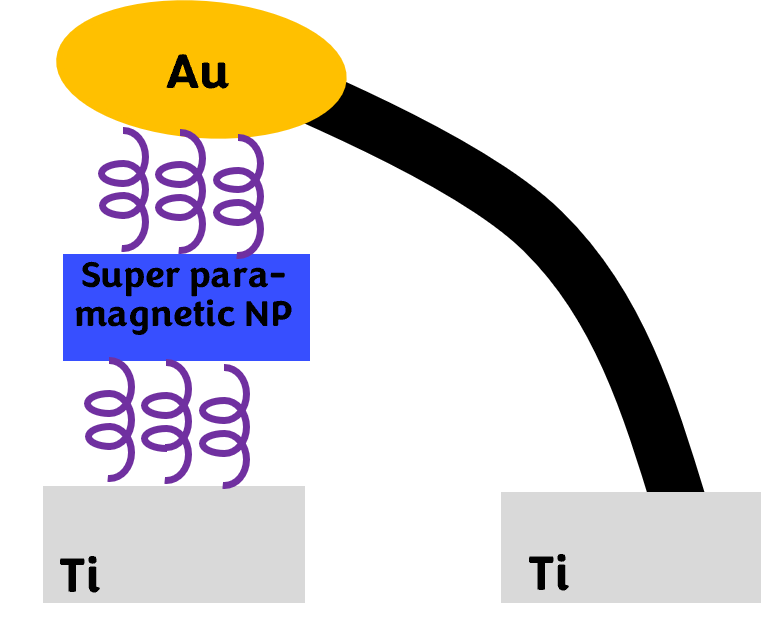Conventional methods for magnetization control rely on magnetic materials and electrical currents, limiting miniaturization, energy efficiency, and operational speed. This technology introduces a novel device that generates local magnetic fields at a sub-micron scale using only a low gate voltage, with no required current or ferromagnetic components. The device is simple, room-temperature operable, and compatible with scalable electronics.
- Spintronic memory devices
- Quantum computing components
- Magnetic logic operations
- Low-power, high-speed magnetic switching
- Scalable magnetoelectric platforms

Illustration of the fabricated spin electronics device. The device is based on a nanofloret hybrid structure, that is based on chiral molecules (L- alpha helix peptide) and 10 nm superparamagnetic NPs (Iron oxides).
- Room-temperature operation without ferromagnets
- No electrical current is needed to induce magnetization
- MHz-range magnetic switching frequency
- Simple,
- low-cost design
- Sub-micron spatial resolution of magnetic fields
Proof-of-concept nanoscale spintronic and memory devices based on the Chiral Induced Spin Selectivity (CISS) effect have been successfully fabricated. The ALD method for chiral oxide deposition was demonstrated, and a complementary spin-coating approach was developed. A stable memory device using chiral oxide and antiferromagnetic layers was achieved, operating reliably up to 100 MHz. Two types of 3D magnetic memory devices, layered and nanofloret-based, were demonstrated, both showing clear CISS-dependent bistable.

Dr. Vered Pardo Yissar

